Facts & Figures 2024: How Does Your State Compare?
Facts & Figures serves as a one-stop state tax data resource that compares all 50 states on over 40 measures of tax rates, collections, burdens, and more.
2 min readHow does South Dakota’s tax code compare? South Dakota does not have an individual income tax. South Dakota also does not have a corporate income tax. South Dakota has a 4.20 percent state sales tax rate and an average combined state and local sales tax rate of 6.11 percent. South Dakota has a 1.01 percent effective property tax rate on owner-occupied housing value.
South Dakota does not have an estate tax or inheritance tax. South Dakota has a 30 cents per gallon gas tax rate and a $1.53 cigarette excise tax rate. The State of South Dakota collects $4,619 in state and local tax collections per capita. South Dakota has $7,398 in state and local debt per capita and has a 100 percent funded ratio of public pension plans. South Dakota’s tax system ranks 2nd overall on the 2025 State Tax Competitiveness Index.
Each state’s tax code is a multifaceted system with many moving parts, and South Dakota is no exception. The first step towards understanding South Dakota’s tax code is knowing the basics. How does South Dakota collect tax revenue? Click the tabs below to learn more! You can also explore our state tax maps, which are compiled from our annual publication, Facts & Figures 2024: How Does Your State Compare?
Subscribe to get insights from our trusted experts delivered straight to your inbox.
Subscribe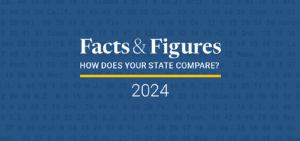
Facts & Figures serves as a one-stop state tax data resource that compares all 50 states on over 40 measures of tax rates, collections, burdens, and more.
2 min read
The State Tax Competitiveness Index enables policymakers, taxpayers, and business leaders to gauge how their states’ tax systems compare. While there are many ways to show how much state governments collect in taxes, the Index evaluates how well states structure their tax systems and provides a road map for improvement.
115 min read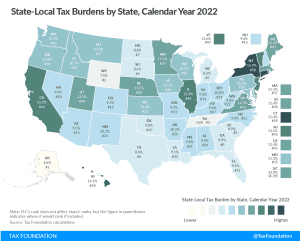
Tax burdens rose across the country as pandemic-era economic changes caused taxable income, activities, and property values to rise faster than net national product. Tax burdens in 2020, 2021, and 2022 are all higher than in any other year since 1978.
24 min read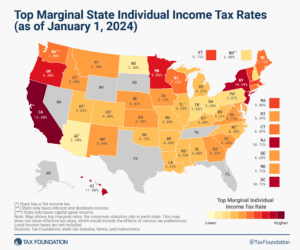
Individual income taxes are a major source of state government revenue, accounting for more than a third of state tax collections. How do income taxes compare in your state?
8 min read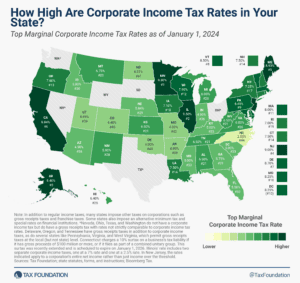
Graduated corporate rates are inequitable—that is, the size of a corporation bears no necessary relation to the income levels of the owners.
7 min read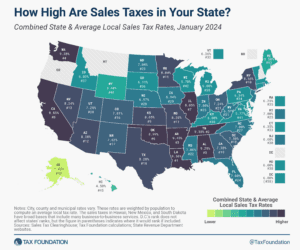
Retail sales taxes are an essential part of most states’ revenue toolkits, responsible for 32 percent of state tax collections and 13 percent of local tax collections (24 percent of combined collections).
9 min read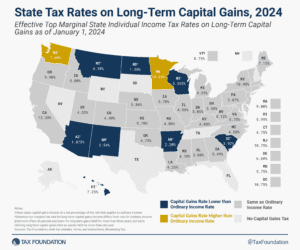
Savings and investment are critical activities, both for individuals’ and families’ financial security and for the health of the national economy as a whole. As such, policymakers should consider how they can help mitigate—rather than add to—tax codes’ biases against saving and investment.
5 min read
With state tax revenues receding from all-time highs, there’s been a great deal of handwringing about whether states can afford the tax cuts adopted over the past few years. Given that 27 states reduced the rate of a major tax between 2021 and 2023, is there reason for concern?
4 min read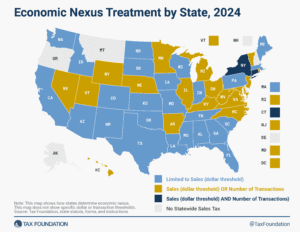
Reforming economic nexus thresholds would not only be better for businesses but for states as well. It is more cost-effective for states to focus on—and simplify—compliance for a reasonable number of sellers than to impose rules that have low compliance and are costly to administer.
4 min read
Do taxes affect individuals’ decisions regarding where to live and work? Can high taxes cause the outmigration of wealthy individuals?
5 min read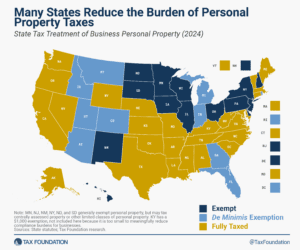
Does your state have a small business exemption for machinery and equipment?
3 min read
Individual income taxes are a major source of state government revenue, accounting for more than a third of state tax collections. How do income taxes compare in your state?
8 min read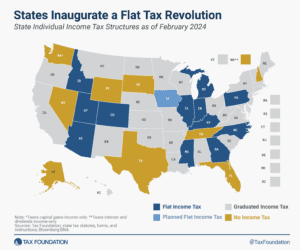
In 2021 and 2022 alone, more states enacted laws converting graduated-rate individual income tax structures into single-rate income tax structures than did so in the whole 108-year history of state income taxation up until that point.
10 min read
Working from home is great. The tax complications? Not so much.
4 min read
Retail sales taxes are an essential part of most states’ revenue toolkits, responsible for 32 percent of state tax collections and 13 percent of local tax collections (24 percent of combined collections).
9 min read
Graduated corporate rates are inequitable—that is, the size of a corporation bears no necessary relation to the income levels of the owners.
7 min read